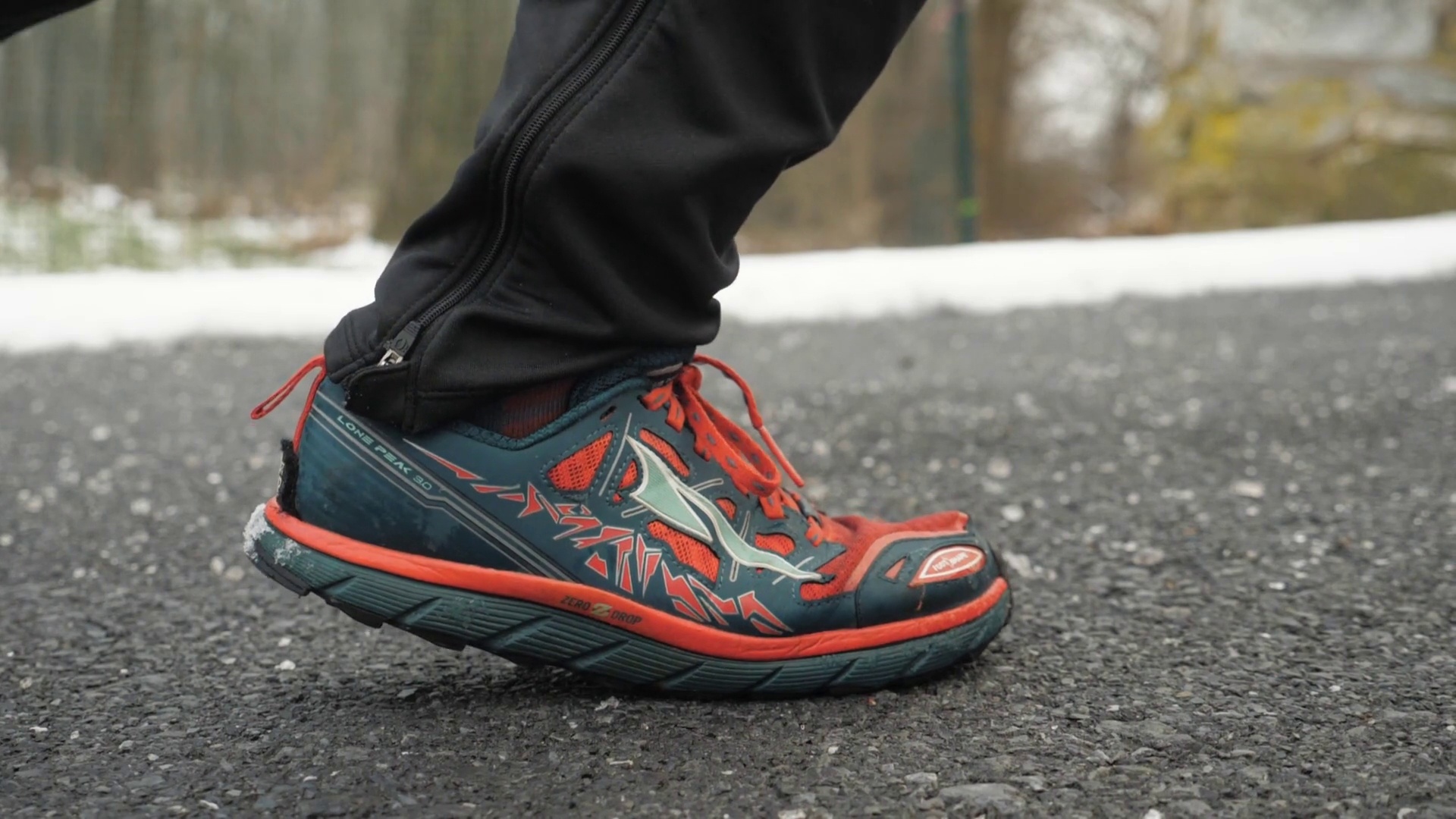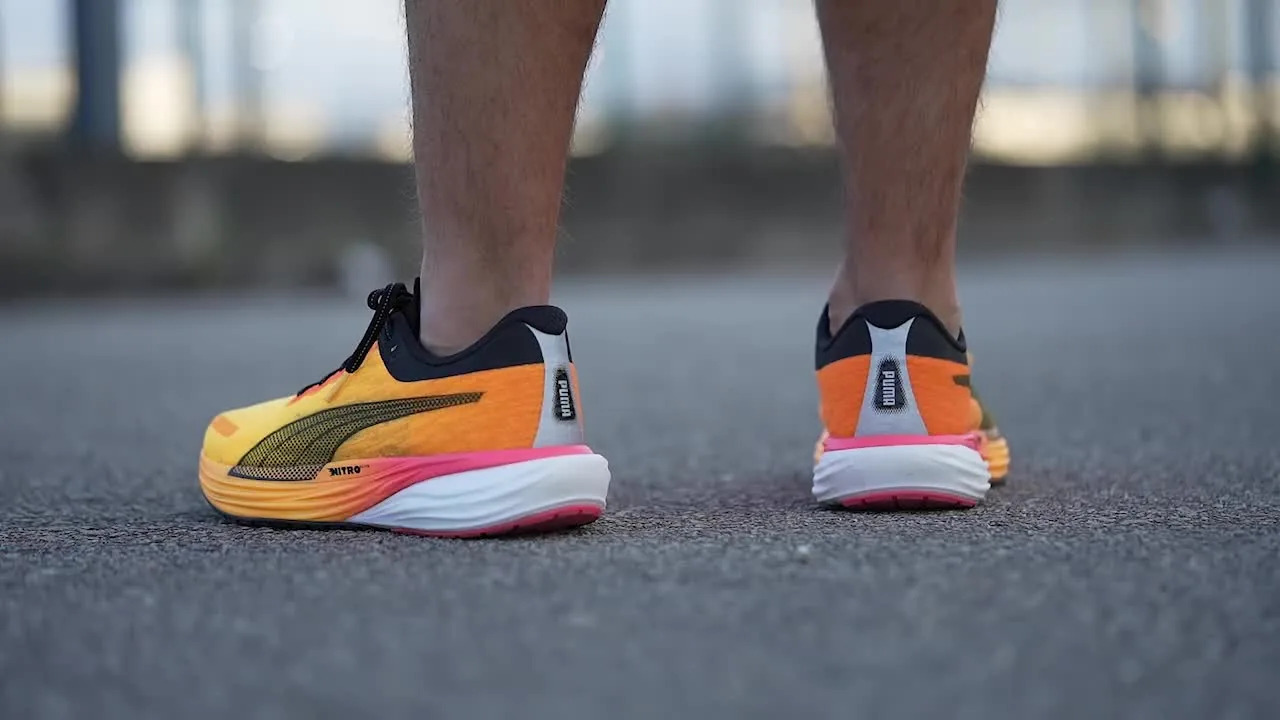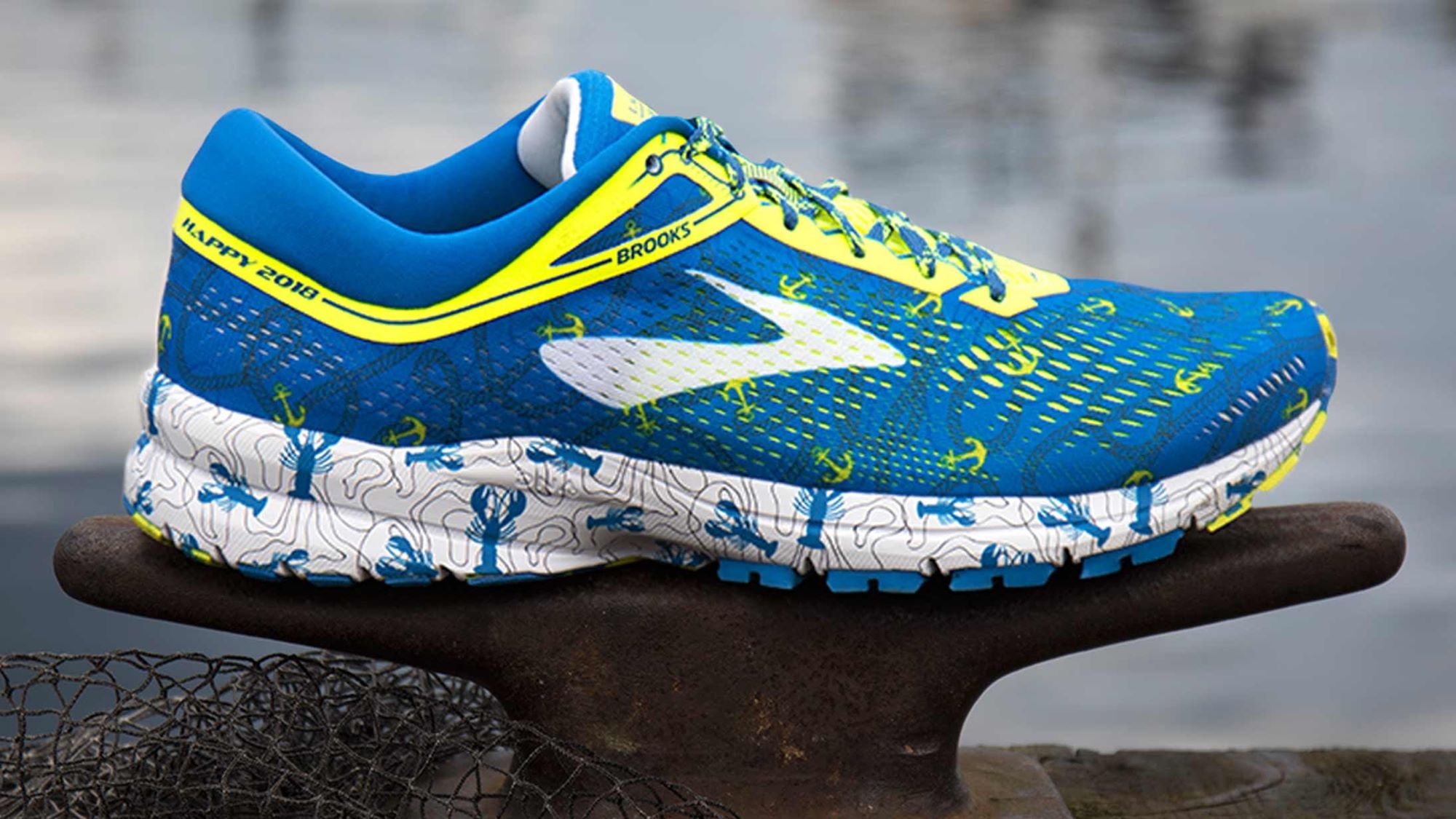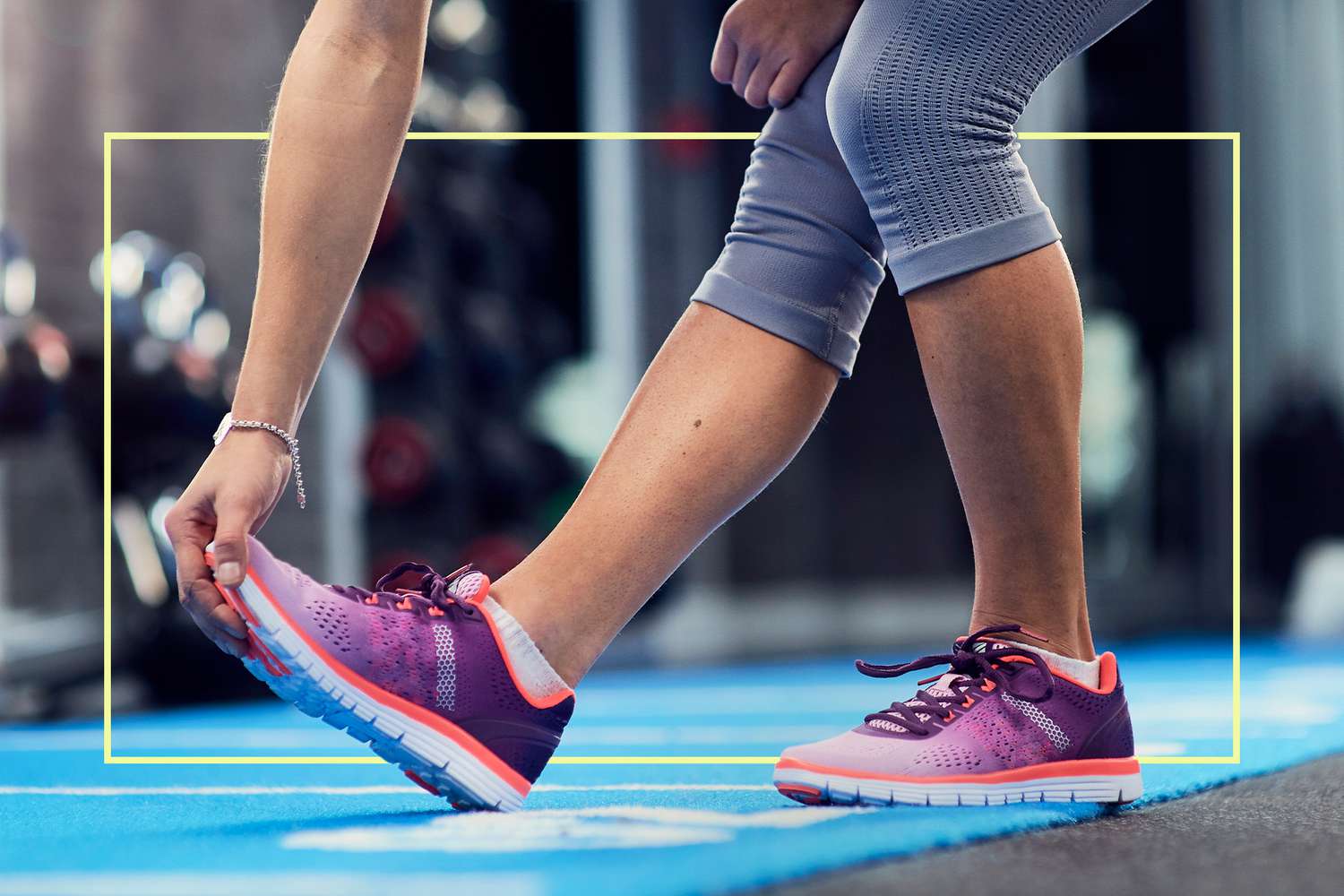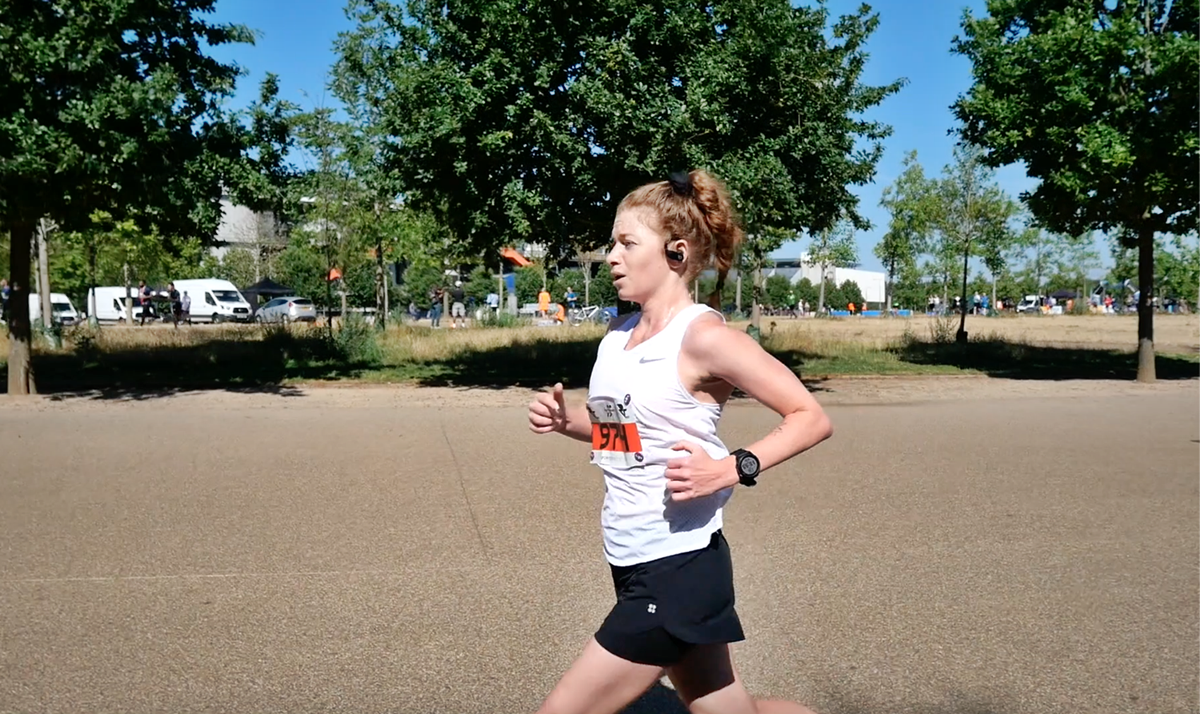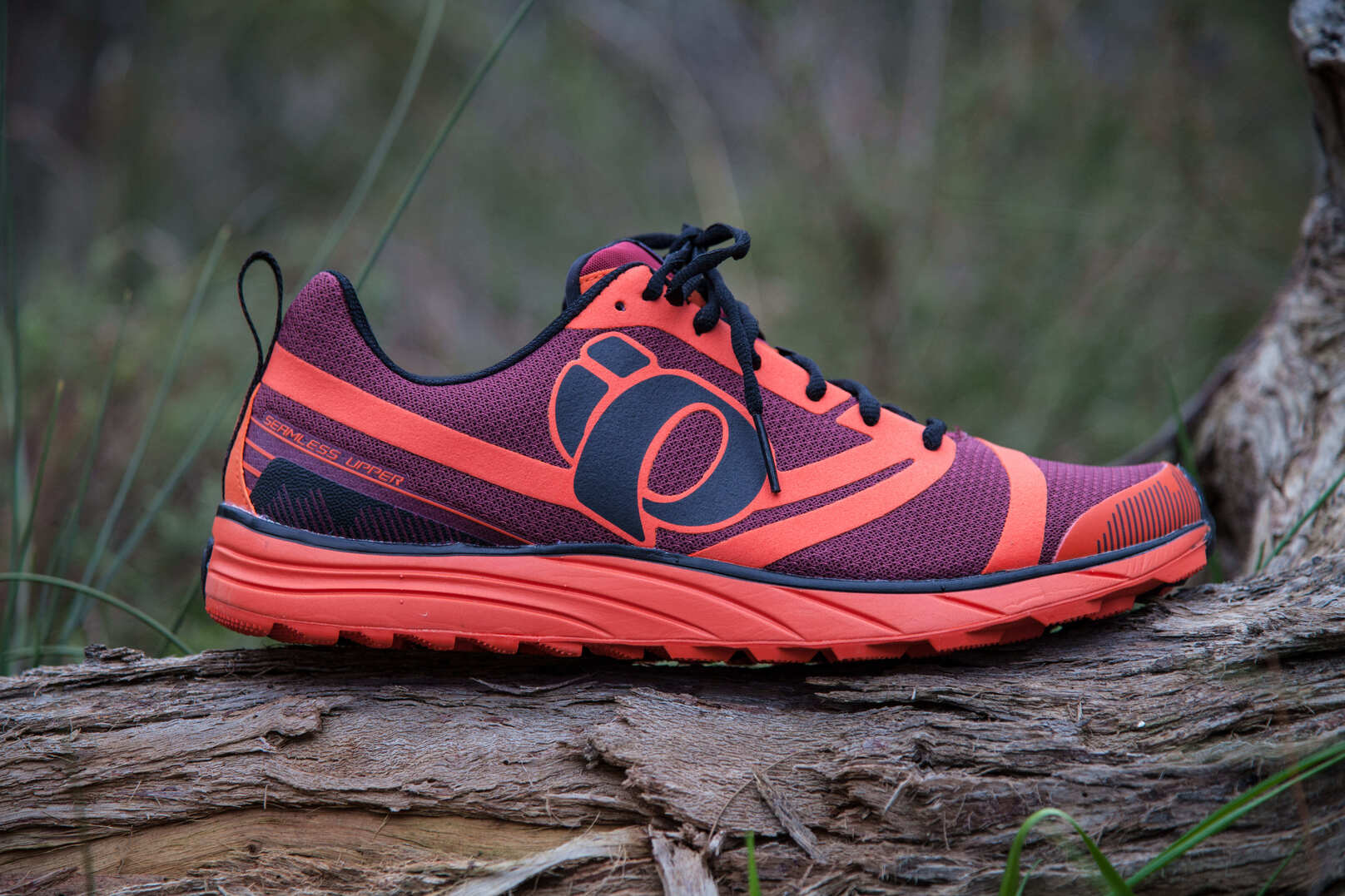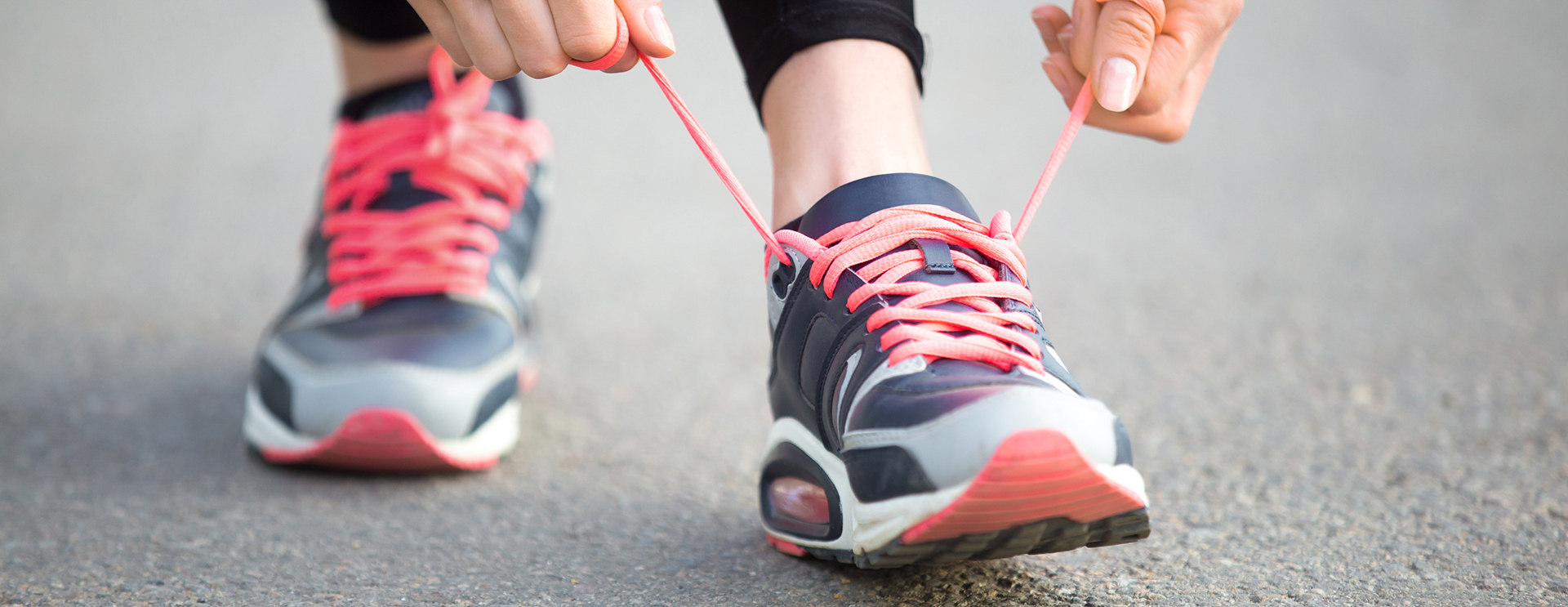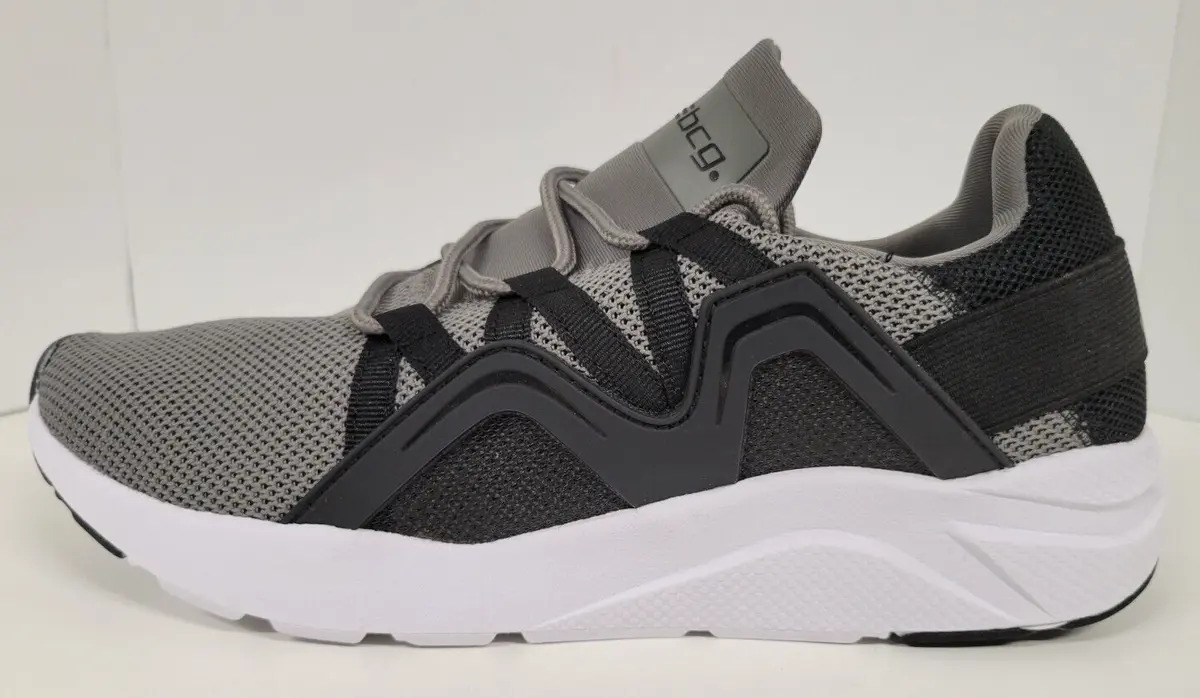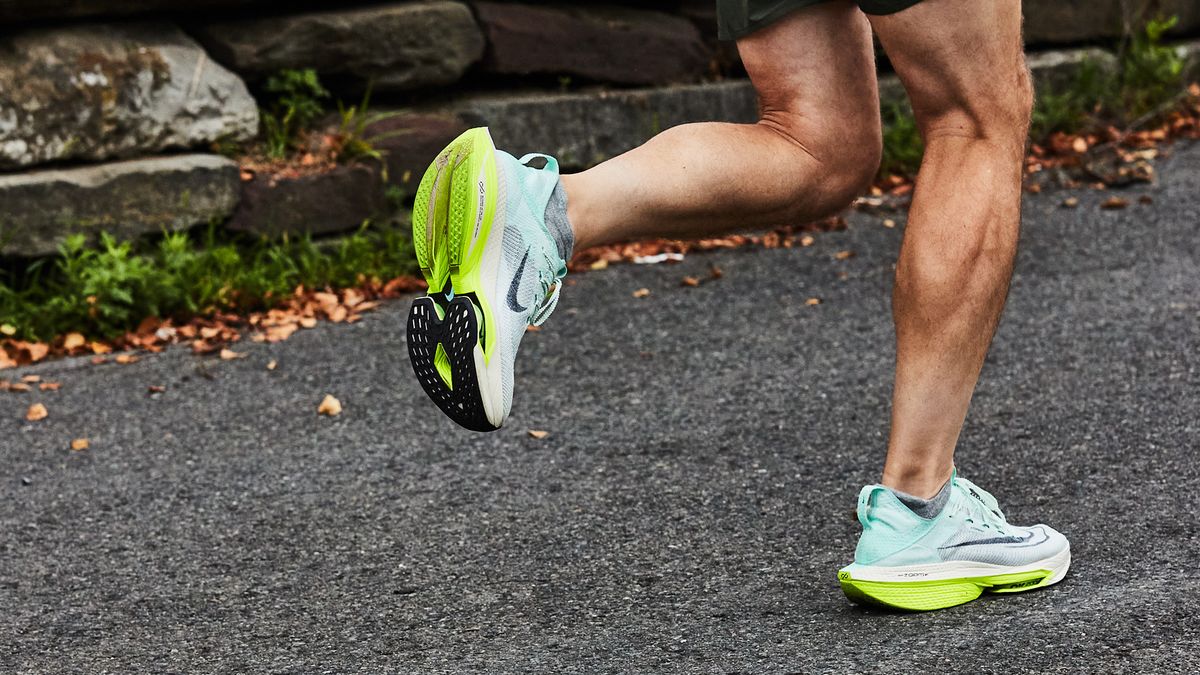Home>Misc>Featured>What Are The Most Comfortable Running Shoes
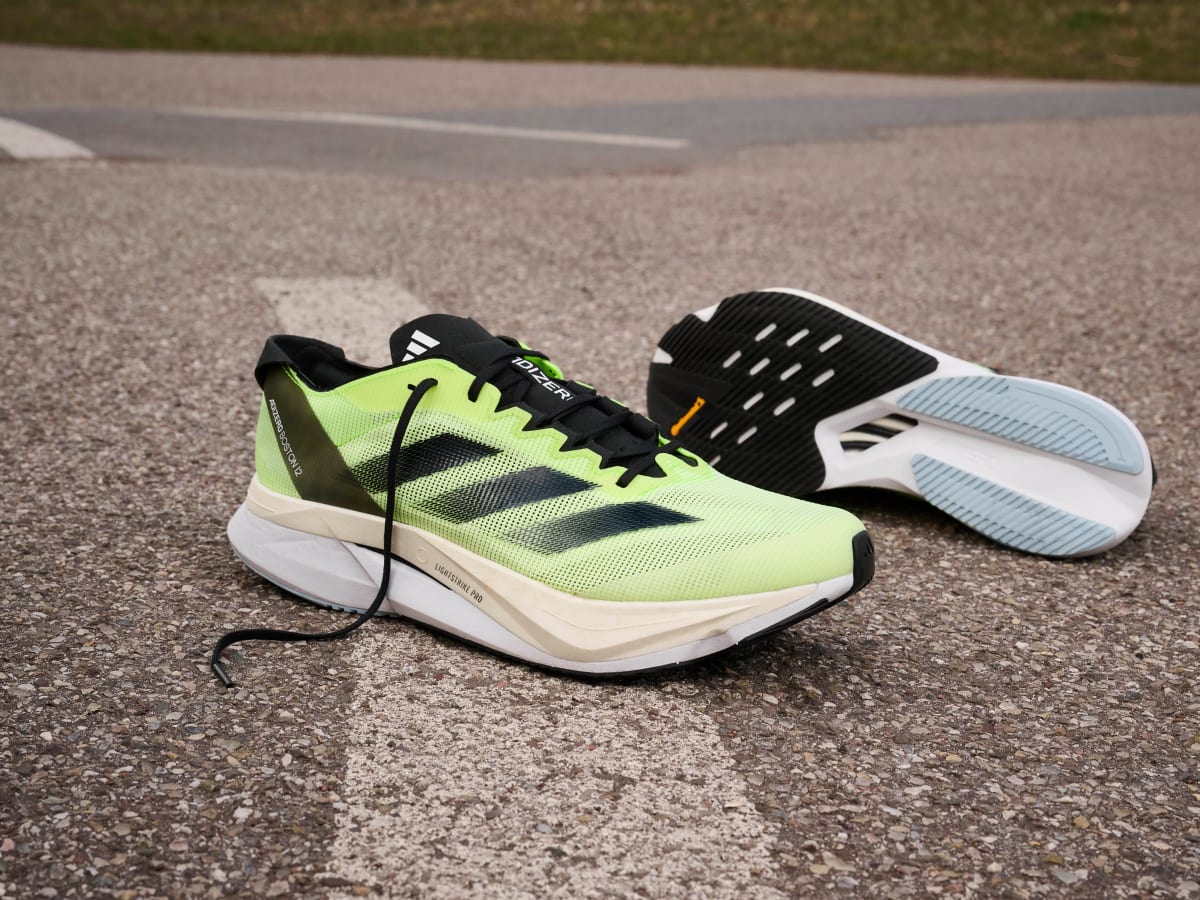

Featured
What Are The Most Comfortable Running Shoes
Modified: January 22, 2024
Discover the Featured running shoes that offer maximum comfort for your runs. Find out which shoes are perfect for your feet and enjoy a comfortable running experience.
Introduction
Choosing the right pair of running shoes is crucial for both seasoned runners and beginners. Not only can they affect the overall performance and endurance of a runner, but they also play a significant role in providing comfort and preventing injuries. With numerous options available in the market, finding the most comfortable running shoes can be a daunting task. But fear not, as we dive into the world of running shoes, we will explore the factors to consider when choosing comfortable running shoes, top brands and models known for their comfort, key features to look out for, common mistakes to avoid, and tips for finding the perfect fit.
When it comes to searching for comfortable running shoes, it’s essential to evaluate various factors such as cushioning, stability, support, flexibility, and overall fit. These aspects can greatly impact how comfortable a pair of running shoes feels on your feet throughout your running journey. The right pair will provide a cushioned yet responsive feel, ensuring your feet are well-supported and protected on each stride.
Top brands like Nike, Adidas, New Balance, and Brooks have been widely recognized for their commitment to producing high-quality and comfortable running shoes. These brands have developed advanced technologies and incorporated innovative materials to enhance comfort and performance. Alongside these renowned brands, there are also lesser-known brands that have gained recognition for their comfortable running shoes.
The key features to look out for in comfortable running shoes include excellent cushioning, breathability, durability, lightweight construction, and proper arch support. These features are designed to optimize comfort during long runs, protecting your feet from impact and reducing the risk of discomfort or injury. Moreover, understanding the common mistakes to avoid when choosing running shoes will help you make an informed decision and invest in the perfect pair for your specific needs.
While understanding the important factors and features is crucial, finding the right fit is equally essential. Each individual has unique feet, arch types, and running styles. Therefore, it’s important to evaluate different brands and models, try them on, and determine the best fit for your feet. As comfort is subjective, what works for one runner may not work for another.
In this article, we will explore some of the top brands and models of comfortable running shoes, along with reviews from customers who have experienced their comfort firsthand. By considering the factors we’ve outlined and using these customer insights, you’ll be well-equipped to find the most comfortable running shoes that suit your needs and enhance your running experience.
Factors to Consider When Choosing Comfortable Running Shoes
When it comes to selecting comfortable running shoes, there are several important factors to consider. These factors can greatly impact your running experience, overall comfort, and even prevent potential injuries. Here are some key factors to keep in mind:
- Cushioning: Adequate cushioning is crucial for comfort while running. It absorbs the impact of each stride and protects your joints. Look for shoes with ample cushioning in the midsole and heel area.
- Support: The level of support is essential, especially if you have specific foot conditions or pronation issues. Shoes with proper arch support and stability features can provide enhanced comfort and prevent overpronation.
- Fit: Finding the right fit is paramount. Ill-fitting shoes can cause discomfort and even lead to blisters or other foot issues. Ensure that your toes have enough room to move and that the shoe hugs your foot securely but not tightly.
- Breathability: Look for shoes made from breathable materials that allow airflow and prevent excessive sweating. Breathable shoes can keep your feet cool and dry, enhancing overall comfort.
- Weight: Lightweight shoes can make a significant difference in comfort, especially during long runs. They reduce the strain on your feet and allow for a more natural running experience.
- Flexibility: Check the flexibility of the shoes. They should provide a good balance of flexibility and stability, allowing for natural foot movement while still providing enough support.
- Durability: Consider the durability of the shoes. High-quality materials and construction techniques ensure that your comfortable running shoes will last longer, providing continued support and comfort.
- Running Surface: Take into account the type of surface you primarily run on. Different shoes are designed for different terrains, such as road running, trail running, or a combination of both. Choose shoes that are suitable for your running surface.
- Personal Preferences: Lastly, consider your personal preferences and running style. Some runners prefer a more cushioned feel, while others prefer a more minimalist shoe. Understanding what suits you best will contribute to finding the most comfortable pair.
By considering these factors and trying out different options, you will be able to make an informed decision when selecting comfortable running shoes. Remember, what works for others may not work for you, so find the pair that suits your unique needs and preferences. Comfort is key in enjoying your running journey and reaching your goals.
Top Brands and Models of Comfortable Running Shoes
When it comes to comfortable running shoes, several top brands have built an excellent reputation for producing high-quality footwear. These brands have invested in research and development to create innovative technologies and designs that prioritize comfort. Here are some of the top brands and their most comfortable running shoe models:
- Nike: Nike is renowned for its cutting-edge technologies and continuous innovation in athletic footwear. Their models such as the Nike Air Zoom Pegasus, Nike React Infinity Run, and Nike Zoom Fly are known for their plush cushioning, lightweight construction, and superior comfort.
- Adidas: Adidas offers a range of comfortable running shoes, including the popular Adidas Ultraboost, Adidas Solarboost, and Adidas Supernova models. These shoes feature responsive cushioning, durable materials, and excellent support, ensuring a comfortable running experience.
- New Balance: New Balance is known for its commitment to producing comfortable and supportive running shoes. Models like the New Balance Fresh Foam 1080, New Balance FuelCell Propel, and New Balance 880v10 provide exceptional cushioning, stability, and a plush fit for maximum comfort.
- Brooks: Brooks has gained a reputation for creating comfortable running shoes suitable for various foot types. The Brooks Ghost, Brooks Adrenaline GTS, and Brooks Levitate are popular models known for their excellent cushioning, stability features, and comfortable fit.
- ASICS: ASICS is a brand that consistently delivers comfortable running shoes. Their Gel-Kayano, Gel-Nimbus, and GT-2000 models offer superior cushioning, enhanced support, and a comfortable fit for runners looking for long-lasting comfort during their runs.
While these brands are widely recognized, it’s important to note that comfort is subjective, and what works for one runner may not work for another. Therefore, it is always recommended to try on different models and brands to find the perfect fit for your feet and running style.
Aside from these well-known brands, several other brands have also gained popularity for their comfortable running shoes. This includes Saucony, Hoka One One, Mizuno, and On Running. Each of these brands offers unique features that prioritize comfort and cater to different running preferences.
Ultimately, the most comfortable running shoe will depend on your specific needs, foot shape, and running style. It’s always a good idea to consult with professionals at specialty running stores, who can analyze your gait and recommend suitable options tailored to your requirements. Their expertise, combined with customer reviews and recommendations, can help you find the perfect pair of comfortable running shoes.
Key Features for Comfort in Running Shoes
When searching for comfortable running shoes, there are several key features to keep in mind. These features are designed to enhance comfort, provide support, and protect your feet during your runs. Here are some vital features to consider:
- Cushioning: Adequate cushioning is essential for comfort. Look for shoes with responsive and plush cushioning in the midsole and heel area. This helps absorb the impact of each stride and reduces the strain on your joints.
- Arch Support: Proper arch support is crucial, especially if you have high arches or flat feet. Look for shoes that have built-in arch support or opt for models that allow customizable insoles to cater to your specific arch needs.
- Fit and Toe Box: The fit of the shoe is crucial for comfort. Consider the width and depth of the shoe, ensuring that your toes have enough room to move freely. A narrow toe box can lead to discomfort, blisters, or even toenail issues, while a spacious toe box allows for natural toe splay.
- Breathability: Breathable materials are essential to prevent excessive sweating and keep your feet cool and dry. Look for shoes that have mesh panels or engineered uppers that allow for proper airflow.
- Flexibility: A good balance of flexibility and stability is vital. The shoe should provide enough flexibility to allow natural foot movement while offering sufficient support to prevent overpronation or excessive foot movement.
- Weight: Consider the weight of the shoe. Lightweight models reduce the strain on your feet and make running more comfortable, especially during longer distances.
- Traction: Having appropriate traction is important, especially if you plan to run on various surfaces. Look for shoes with durable rubber outsoles that provide good grip and stability.
- Durability: A durable shoe provides long-lasting comfort. Look for high-quality materials and sturdy construction that can withstand the wear and tear of regular running.
- Heel Counter: The heel counter plays a role in stabilizing your foot and preventing excessive movement in the shoe. Look for a shoe with a firm and supportive heel counter that keeps your foot secure.
These key features contribute to the overall comfort and performance of running shoes. However, it is important to remember that everyone’s feet are unique, and what works for one person may not work for another. Therefore, it’s essential to try on different models and brands to find the perfect fit for your feet and running style.
By considering these key features, you can narrow down your options and find comfortable running shoes that support your feet, provide cushioning, and make your running experience enjoyable.
Common Mistakes to Avoid When Choosing Running Shoes
Choosing the right running shoes is crucial for comfort, performance, and injury prevention. However, many runners make common mistakes that can hinder their experience and potentially lead to discomfort or injuries. Here are some of the most common mistakes to avoid when choosing running shoes:
- Ignoring Proper Fit: One of the biggest mistakes is ignoring the importance of a proper fit. Ill-fitting shoes can lead to discomfort, blisters, and even toenail issues. Always try on shoes and ensure they have enough room for your toes to move freely. Make sure the shoe hugs your foot securely but not too tightly.
- Not Considering Your Running Style: Different running shoes are designed for different types of runners. It’s important to consider your running style, such as whether you overpronate, have a neutral gait, or underpronate. Choosing a shoe that matches your running style can provide the necessary support and comfort to prevent injuries.
- Not Factoring in Arch Type: Knowing your arch type (high, neutral, or low) is important when selecting running shoes. Shoes with proper arch support can prevent discomfort and provide the necessary stability to avoid injuries. If you’re uncertain about your arch type, consult a professional at a specialty running store.
- Ignoring Cushioning and Support: Cushioning and support are crucial for comfort and injury prevention. Some runners mistakenly assume that more cushioning is always better, while others overlook the need for adequate support. Finding the right balance of cushioning and support that suits your needs is essential for a comfortable running experience.
- Not Considering Your Running Environment: Different terrains require different types of shoes. Trail running shoes are designed for off-road running, while road running shoes are suitable for pavement or track running. Not considering your running environment can lead to discomfort or decreased performance.
- Buying Based on Looks: While aesthetics are important, solely choosing running shoes based on their appearance is a mistake. Remember, comfort and functionality should be the priority when selecting shoes. Focus on the features and fit rather than simply going for the trendiest design.
- Ignoring Product Reviews: Neglecting to read and consider product reviews can be a mistake. Reviews from other runners can provide valuable insights into the comfort, durability, and performance of a particular model. Take advantage of the experience and feedback of others to help inform your decision.
Avoiding these common mistakes when choosing running shoes can significantly enhance your comfort and running experience. Take the time to research, try on different options, and consult professionals to ensure you find the perfect pair that suits your needs, running style, and foot characteristics.
Tips for Finding the Right Fit in Running Shoes
Finding the right fit in running shoes is essential for comfort, performance, and injury prevention. Here are some tips to help you find the perfect fit:
- Know Your Foot Type: Understanding your foot type is crucial in finding the right fit. Determine whether you have high arches, low arches, or neutral arches. This information can help guide your decision in choosing shoes with the appropriate level of support.
- Measure Your Feet: Get your feet measured professionally or use a measuring tool at home. Feet can change in size and shape over time, so it’s essential to have an accurate measurement to ensure the right fit.
- Try on Shoes in the Afternoon: Feet tend to swell throughout the day, so it’s best to try on running shoes in the late afternoon or evening. This ensures that you choose a size that accommodates any swelling that may occur during your runs.
- Leave Some Wiggle Room: Ensure that there is enough room in the toe box for your toes to move freely. A thumb’s width of space between your longest toe and the front of the shoe is a good indicator of proper fit.
- Consider Orthotics: If you require orthotic inserts or custom insoles, bring them with you when trying on running shoes. This allows you to assess the fit and comfort with the inserts in place.
- Try Different Brands and Models: Experiment with different brands and models to find the one that suits your foot shape and running style. Each brand has slightly different fits and designs, so don’t be afraid to explore various options.
- Test the Shoes: Take the time to walk or jog around the store to ensure a comfortable fit. Pay attention to any pressure points, slipping, or discomfort. It’s important to feel confident in the shoes before making a purchase.
- Consider Socks: Try on running shoes with the type of socks you typically wear during your runs. Socks can affect the fit and comfort of the shoe, so make sure to replicate your usual running conditions as closely as possible.
- Consult with Professionals: If you’re unsure about the fit or have specific foot conditions, consult with professionals at specialty running stores. They can provide expert advice, analyze your gait, and recommend suitable options.
Remember, finding the right fit may take some time and experimentation. It’s worth investing the effort to ensure that you select a pair of running shoes that provide optimal support, comfort, and performance. A shoe that fits well will make your running experience more enjoyable and help you reach your running goals with ease.
Review of Customer Favorites for Comfortable Running Shoes
When it comes to finding the most comfortable running shoes, customer reviews can provide valuable insights and help guide your decision. Here is a compilation of some customer-favorite running shoes known for their comfort:
- Nike Air Zoom Pegasus: The Nike Air Zoom Pegasus has been praised for its exceptional cushioning, lightweight feel, and comfortable fit. Runners appreciate the responsive feel of the Zoom Air units in the forefoot and heel, providing a smooth and comfortable ride.
- Adidas Ultraboost: The Adidas Ultraboost is highly regarded for its outstanding comfort and cushioning. The Boost midsole technology offers a plush and responsive feel, while the Primeknit upper provides a snug and supportive fit.
- New Balance Fresh Foam 1080: Customers love the Fresh Foam 1080 for its soft yet supportive cushioning. The Fresh Foam midsole provides a luxurious and comfortable feel, while the spacious toe box allows for natural toe splay and added comfort during long runs.
- Brooks Ghost: The Brooks Ghost is a customer favorite due to its balanced cushioning and comfortable fit. It offers a soft and responsive ride, with ample cushioning in the midsole and a secure, adaptable fit that caters to various foot shapes.
- ASICS Gel-Nimbus: The ASICS Gel-Nimbus is praised for its exceptional comfort and cushioning. The Gel cushioning system in the heel and forefoot provides excellent shock absorption, while the FluidRide midsole offers a responsive and comfortable feel.
These customer-favorite running shoes are just a selection of the many options available. Keep in mind that what works for one runner may not work for another, as comfort is subjective. It’s important to consider factors such as your foot type, running style, and personal preferences when choosing the most comfortable running shoes for you.
When researching customer reviews, pay attention to common themes, such as comfort, durability, and overall satisfaction. It’s also helpful to read reviews from runners who have similar foot types or running goals as you. Their experiences can provide insight into how the shoes may perform for you.
Don’t solely rely on customer reviews when making your decision. Personal comfort should be your ultimate guide. Visit specialty running stores where experts can analyze your gait and provide recommendations based on your specific needs. Trying on different models and brands will give you a better understanding of what feels comfortable and supportive for your feet.
Ultimately, finding the most comfortable running shoes is a personal journey. Consider the feedback from other runners, but let your own experience and comfort be the final factor in selecting the perfect pair for your running endeavors.
Conclusion
Choosing the most comfortable running shoes is essential for an enjoyable and injury-free running experience. By considering factors such as cushioning, support, fit, breathability, weight, flexibility, durability, and running surface, you can narrow down your options and find the perfect pair that caters to your specific needs and preferences.
There are several top brands known for their comfortable running shoes, including Nike, Adidas, New Balance, Brooks, and ASICS. These brands offer a range of models with features that prioritize comfort, durability, and performance. However, it’s important to remember that comfort is subjective, and what works for one runner may not work for another. Therefore, it’s crucial to try on different brands and models to find the perfect fit for your feet and running style.
Common mistakes to avoid when choosing running shoes include ignoring proper fit, not considering your running style and arch type, not factoring in cushioning and support, and buying solely based on looks. By avoiding these mistakes and considering the advice of professionals, you can make an informed decision and find the most comfortable running shoes for you.
When searching for the right fit, keep in mind tips such as knowing your foot type, getting accurate measurements, trying on shoes in the afternoon, leaving room for toe movement, considering orthotic inserts, trying different brands and models, testing the shoes, and consulting with professionals. Taking the time to find the perfect fit will greatly enhance your comfort and running experience.
Lastly, customer reviews can provide valuable insights into the comfort and performance of running shoes. However, it’s important to remember that customer preferences may vary, so use reviews as a guide and trust your own comfort and feel when making a decision.
Ultimately, finding the most comfortable running shoes is a personal journey. By considering the factors discussed and using customer insights, you can make an informed decision and find the perfect pair that will support you on your running journey, elevate your comfort, and help you achieve your running goals.
